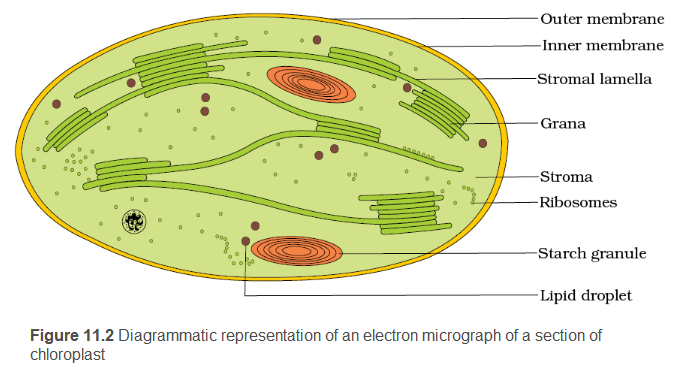11.3 Where does Photosynthesis take place?
You would of course answer: in ‘the green leaf’ or ‘in the chloroplasts’, based on what you earlier read in Chapter 8. You are definitely right. Photosynthesis does take place in the green leaves of plants but it does so also in other green parts of the plants. Can you name some other parts where you think photosynthesis may occur?
You would recollect from previous unit that the mesophyll cells in the leaves, have a large number of chloroplasts. Usually the chloroplasts align themselves along the walls of the mesophyll cells, such that they get the optimum quantity of the incident light. When do you think the chloroplasts will be aligned with their flat surfaces parallel to the walls? When would they be perpendicular to the incident light?
You have studied the structure of chloroplast in Chapter 8. Within the chloroplast there is membranous system consisting of grana, the stroma lamellae, and the matrix stroma (Figure 11.2). There is a clear division of labour within the chloroplast. The membrane system is responsible for trapping the light energy and also for the synthesis of ATP and NADPH. In stroma, enzymatic reactions synthesise sugar, which in turn forms starch. The former set of reactions, since they are directly light driven are called light reactions (photochemical reactions). The latter are not directly light driven but are dependent on the products of light reactions (ATP and NADPH). Hence, to distinguish the latter they are called, by convention, as dark reactions (carbon reactions). However, this should not be construed to mean that they occur in darkness or that they are not light-dependent.
